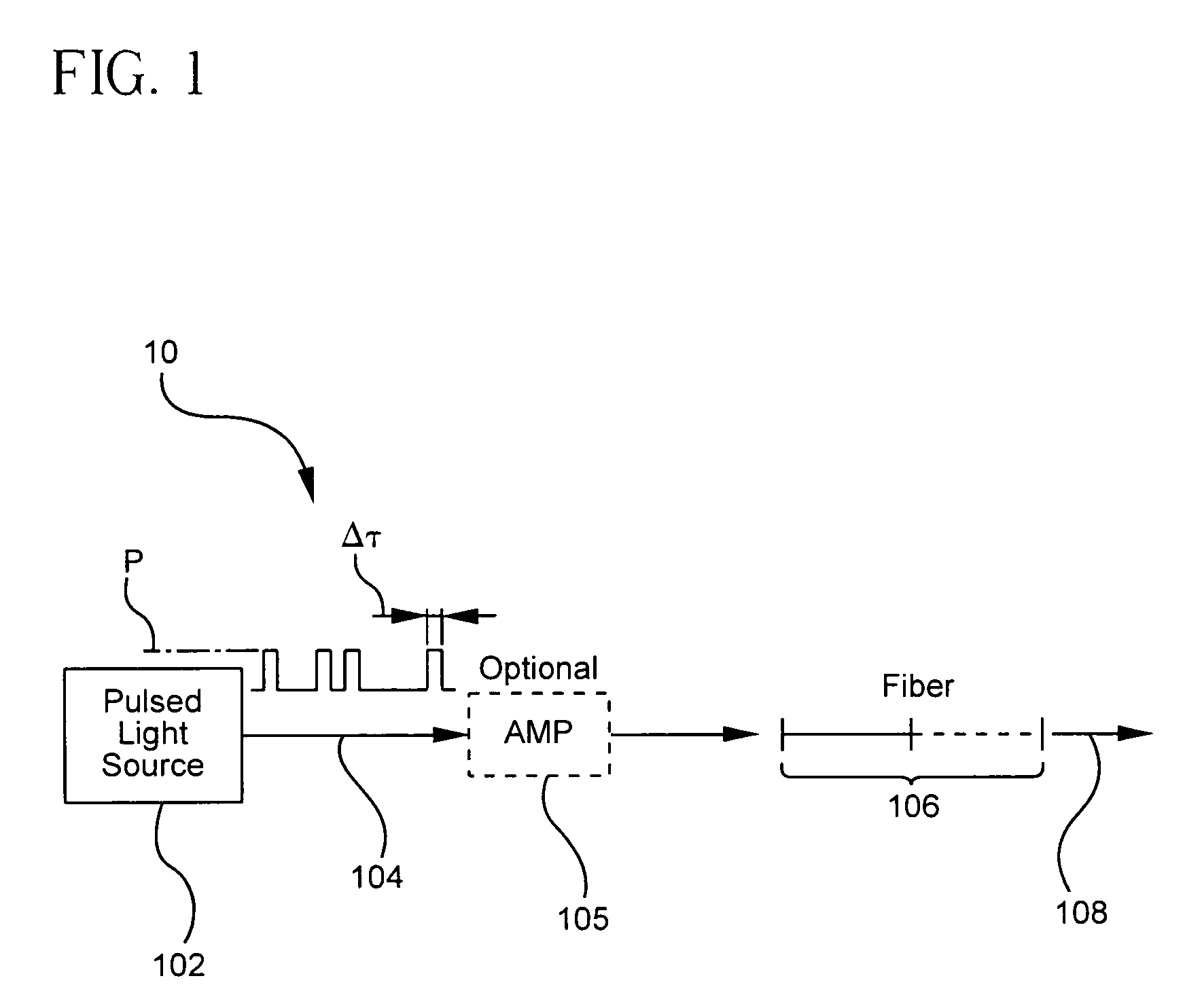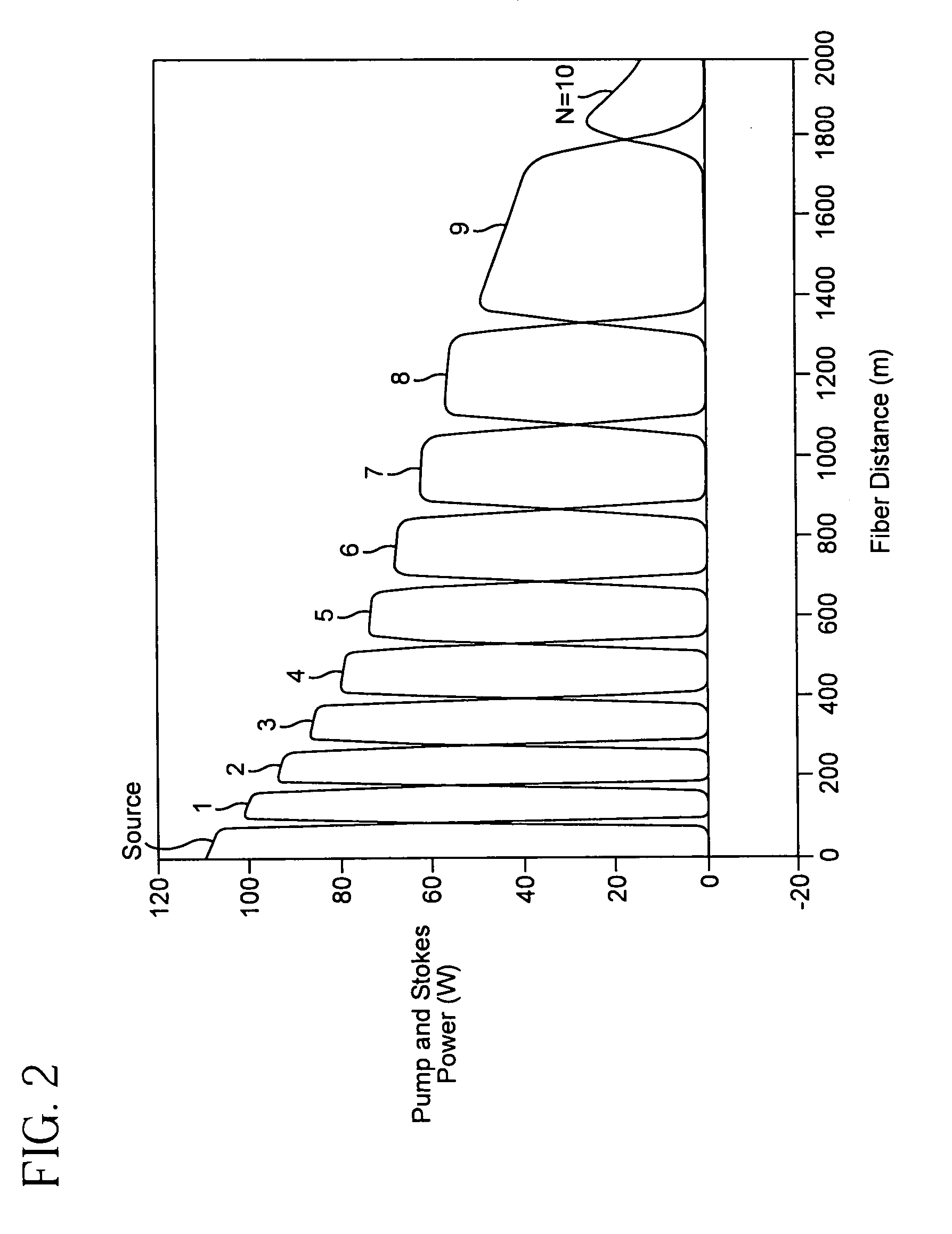Pulsed cascaded Raman laser
a laser and cascade technology, applied in the field of lasers, can solve the problems of reducing the conversion efficiency with the increasing number, limiting the choice of longer wavelength light sources, and limited to a very low output power and/or operation at cryogenic temperatures
- Summary
- Abstract
- Description
- Claims
- Application Information
AI Technical Summary
Benefits of technology
Problems solved by technology
Method used
Image
Examples
Embodiment Construction
[0018]A non-cavity or non-resonant method and apparatus for generating coherent light are taught herein. In accordance with the teachings of the present invention, cascaded stimulated Raman scattering (SRS) of pulsed pump radiation in an optical fiber with normal (negative) dispersion is used in the inventive method and apparatus to result in multiple order wavelength shifts of initially shorter wavelength towards longer wavelengths.
[0019]Reference will now be made in detail to the present preferred embodiments of the invention, examples of which are illustrated in the accompanying drawings. Whenever possible, the same reference numerals will be used throughout the drawings to refer to the same or like parts. One embodiment of the wavelength converter or Raman laser of the present invention is shown in FIG. 1, and is designated generally throughout by the reference numeral 10.
[0020]Referring to FIG. 1, a pulsed cascaded Raman laser 10 includes a pulsed light source 102 for generatin...
PUM
 Login to View More
Login to View More Abstract
Description
Claims
Application Information
 Login to View More
Login to View More - R&D
- Intellectual Property
- Life Sciences
- Materials
- Tech Scout
- Unparalleled Data Quality
- Higher Quality Content
- 60% Fewer Hallucinations
Browse by: Latest US Patents, China's latest patents, Technical Efficacy Thesaurus, Application Domain, Technology Topic, Popular Technical Reports.
© 2025 PatSnap. All rights reserved.Legal|Privacy policy|Modern Slavery Act Transparency Statement|Sitemap|About US| Contact US: help@patsnap.com



